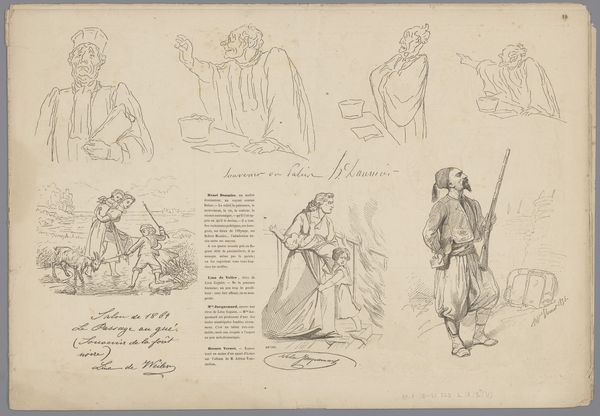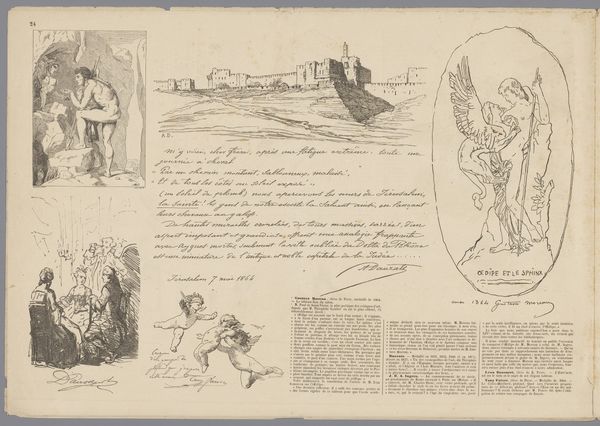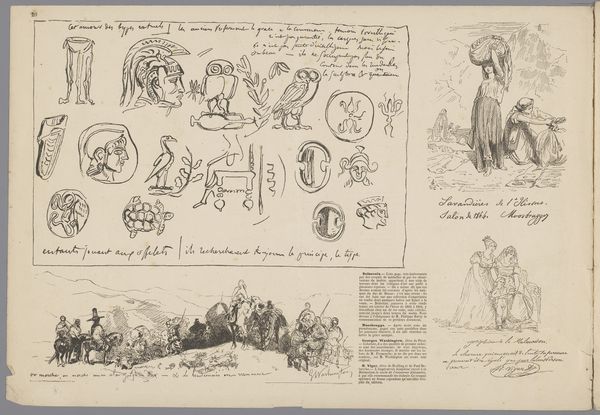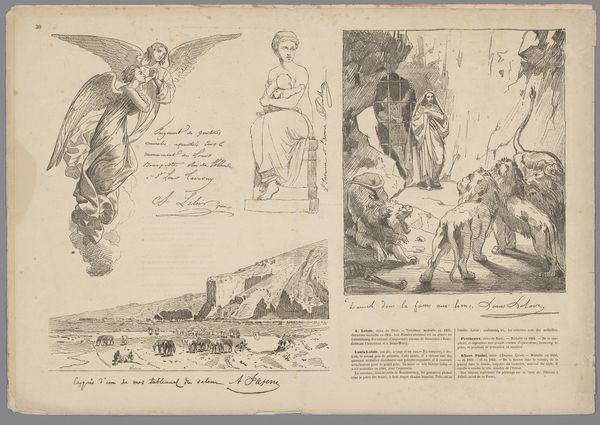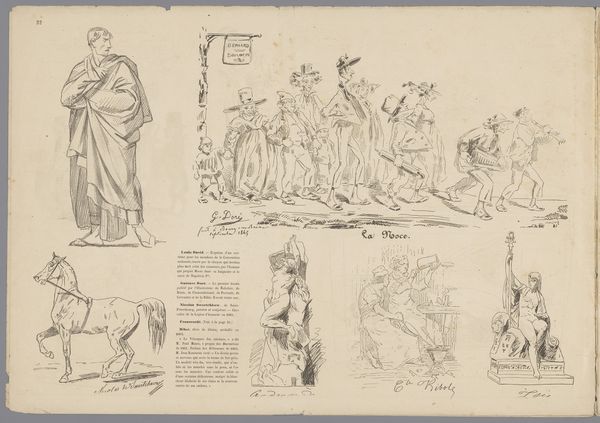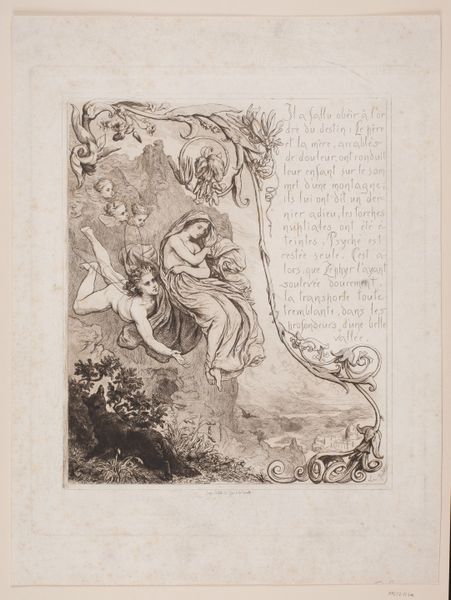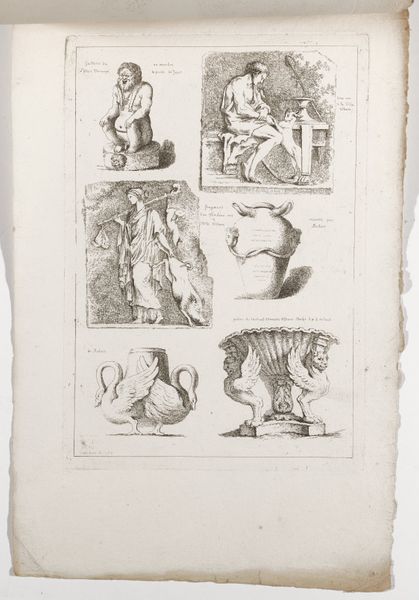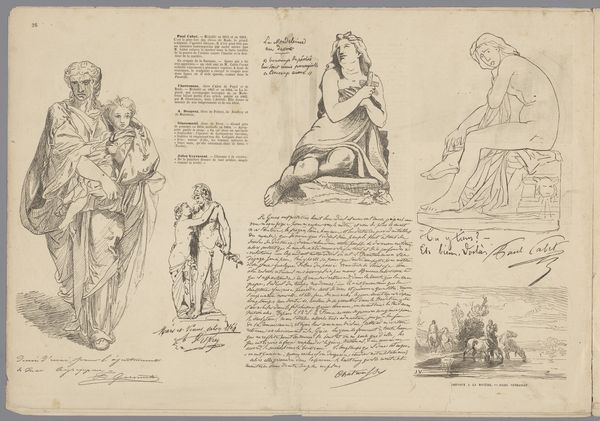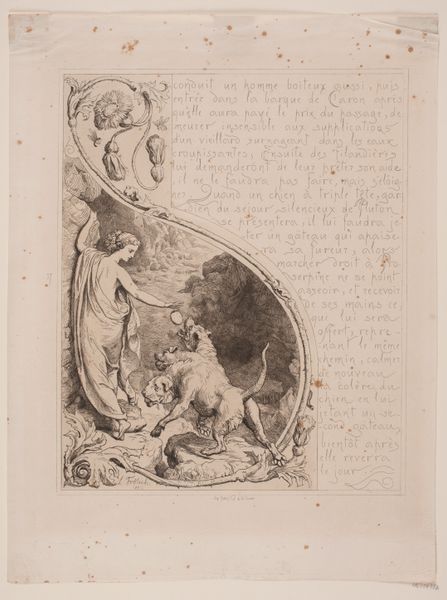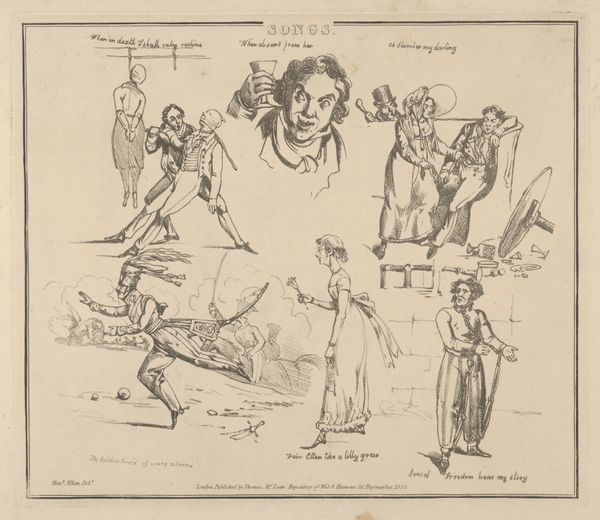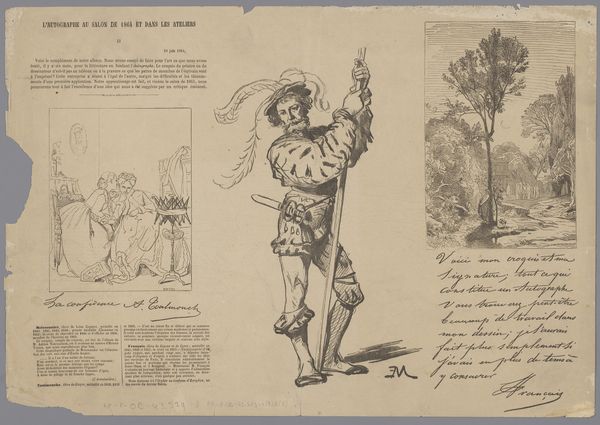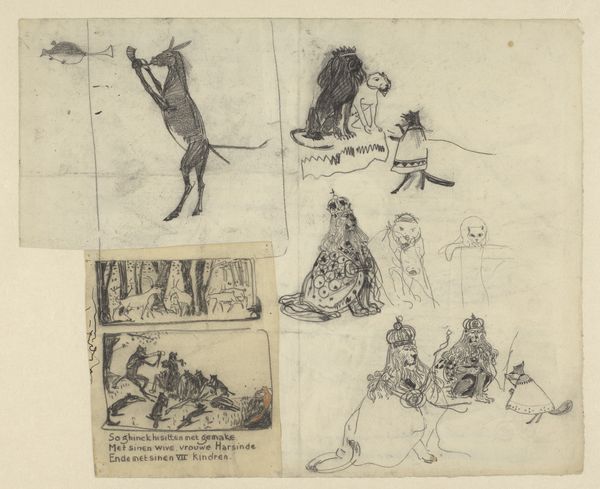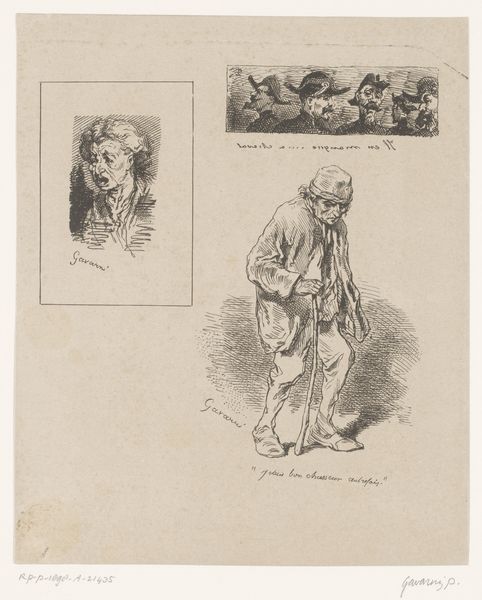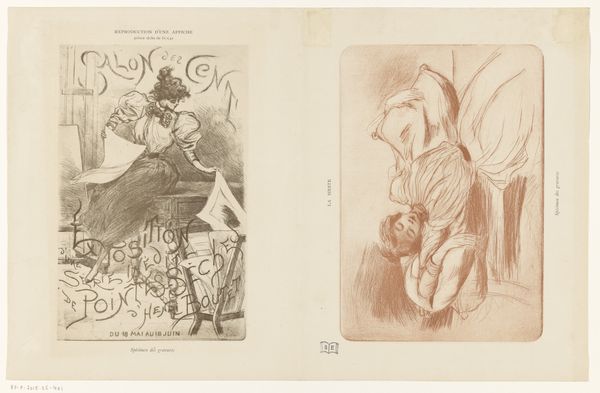
Personificatie van de Overwinning, twee vechtende mannen, Orpheus en het hoofd van een man Possibly 1864 - 1866
0:00
0:00
drawing, paper, ink
#
portrait
#
drawing
#
narrative-art
#
figuration
#
paper
#
ink
Dimensions: height 327 mm, width 468 mm
Copyright: Rijks Museum: Open Domain
Curator: Welcome. Before us, we have "Personification of Victory, Two Fighting Men, Orpheus and the Head of a Man", a drawing by Firmin Gillot, potentially from 1864 to 1866. It’s rendered in ink on paper, blending figuration, narrative, and portrait styles. Editor: Oh, it’s chaotic! I mean that in the best way. Like a glimpse into someone's sketchbook when their mind is just overflowing. All these separate scenes crammed together—it's unsettling but also so vibrant. Curator: Absolutely. Notice how Gillot divides the sheet into distinct vignettes, yet connects them through thematic resonance and material continuity. The composition, while appearing scattered at first glance, uses the blank space as a compositional tool, allowing each drawing to breathe individually while still participating in a unified field. Editor: Right! It almost feels like peering into someone's dream journal. That winged figure on the left – Victory, I suppose – feels stiff compared to those men wrestling, so rough and tumble. And then there's Orpheus. He is such a stark contrast with the raw emotion. He is serenely posing near the beast while leaning against the bark of a tree, detached in his sorrow or singing. It's kind of breathtaking. Curator: Indeed. The "Personification of Victory" references classical ideals with precise lines that render a sense of stability; that offers a grounding influence against the dramatic energy depicted elsewhere on the sheet. And yes, regarding Orpheus, Gillot elegantly captures the musician’s melancholic state and the forest, creating a symbolic exploration of loss and its acceptance within the natural world. Editor: And the material too... the paper itself feels fragile, like holding a thought before it fades. You can practically smell the ink! Each line is so immediate, almost desperate in places, trying to catch something fleeting. Curator: Indeed, that haptic relationship makes each work distinct and contributes to an expressive aesthetic. Together with line thickness, varied texture and visual planes achieve dynamism across this single sheet, encouraging a dialogue between classicism and a looser, more personal form of expression. Editor: Thinking about this piece and how it was brought together, Gillot felt like he needed to lay all of it out on a table for us to sift through... What does it say to you in summary? Curator: This particular piece showcases the artist’s complex, fragmented view, and technical mastery. It makes it an exemplar piece from the period!
Comments
No comments
Be the first to comment and join the conversation on the ultimate creative platform.
